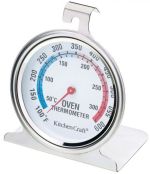- Paving
- Electrical Engineering and Telecoms Infrastructure
- Civil Engineering, Mining, Railway, Building and Plumbing Products
- Curbs / Kerbs
- Landscaping, Streetscaping, Gardening products
- Moulds
- Pizza Oven Kit
- Avalon range
- Builders' and Plumbers' Products
- Benches and Seats
- Concrete Tables
- Grass Blocks
- Litter/Refuse Bins
- Pots and planters (Discontinued)
- Tree rings
- Bollards and Barriers
- Stone Cellar Blocks
- Water features (Discontinued)
USING YOUR PIZZA OVEN
This page is continuously being upgraded
After having completed the installation of your pizza oven together with all the necessary building work, you can start using it. If you are not familiar with new pizza ovens, read this information to save a lot of time, frustration and possibly damage to your oven.
Headings
- Burning-in or curing your pizza oven
- Information on suitable firewood for a pizza oven
- Firing up your pizza oven for cooking
Burning-in or Curing
A new pizza oven has to be burnt-in or cured. If this is not done and it is started up with a huge fire, it may cause cracking and spalling of the oven components. Burning-in will establish the integrity of your oven and ensure a long and pleasurable working life.
The purpose of burning-in is to gradually de-hydrate the components of which the oven is made. Your pizza oven is made of concrete, vermiculite bricks, and probably cement plaster and brick mortar. These are freshly manufactured raw materials using a wet process. Although it all looks "dry" after normal cement hardening, it still contains a quantity of water hidden in the pores of the material. Should the temperature be suddenly raised high above boiling temperature in a blast of fire, the pore water will expand and that may cause cracking, chipping or spalling.
Burning-in or curing is a process of gradually removing excess pore water. In the absence of the water, the expansion cannot take place. The oven components can absorb all the needed heat and give it back, which makes all round cooking possible.
The Burning-in Process
We know that you cannot wait to make your first pizzas but patience is the key here. Follow these easy steps and your oven will be ready in less than two weeks.

The temperatures given are taken in the oven chamber just inside the opening. Use a metal oven thermometer capable of temperatures of at least 300°C. These can be purchased at professional catering equipment merchants or stockists of kitchenware or try www.yuppiechef.co.za to purchase online. If you are unable to get hold of one, please contact Vanstone.
Step 1: After completing all wet work, let the oven rest for at least a week. Thereafter you can start with a small wood fire that is gradually increased in size until curing is complete.
Step 2 (day 1): Make a small fire in the middle of the oven and maintain it all day long at a temperature 100°C - 150°C
Step 3 (day 2): Rebuild the fire but a little larger. Maintain a temperature of 150° - 175°C throughout the day.
Step 4 (day 3): Ditto 175°C - 200°C
Step 5 (day 4): Ditto 200°C - 230°C
Step 6 (day 5): Ditto 230°C - 260°C
Please Note:
Use only suitable wood for the fire and not other types of fuel like petrol, oil or gas.
When the temperature is too hot, remove some fuel with a long poker or spade. Do not squirt water into the oven.
If for some reason you were not able to build your oven for at least six months after purchasing the Vanstone components, and they were stored in a dry ventilated place, you may assume that the concrete is at least partially cured. The burning-in process may be speeded up by carefully monitoring the concrete as well as outside components for any signs of cracking or spalling. If a lot of steam is generated, slow down and extend the process.
Your Pizza Oven is now ready for cooking.
Suitable Firewood for Pizza Ovens
| In South Africa we are braai crazy and we know that good firewood is hard bushveld wood that burns slowly to make hot and long lasting coals for the open fire. That is true for a braai and charcoal, especially the compressed type. Please note that the cooking the heat is stored in the glowing coals. |
A pizza oven uses a very different concept. In a pizza oven the fire serves the purpose of giving heat energy to the walls, roof and floor of the oven. These components are solid and can hold a lot of heat. Because of the insulation material surrounding the oven, this heat cannot escape and is stored there to be gradually transferred back to do the cooking.
Suitable wood for a pizza oven is fast burning clean wood like dry pine and black wattle. There is not room for large logs and they take too long to burn properly anyway. Short cloven pieces not longer than 0.5m is ideal. One of the best natural woods to use is dry sekelbos. It is easy to light, fast burning and the right size.
Do not use bluegum, any form of treated wood or charcoal. Do not use poisonous wood like tamboti. If you only have bushveld wood, it will work but use only the small pieces.
Keep a good stock of suitable wood handy. The fast burning fire quickly burns down and then you must be ready to keep stoking it. A good place to store the wood is under the oven platform.
Make sure the wood is dry. Often wood purchased at the roadside like wattle is still somewhat wet. Trying to use such wood will only lead to frustration. If you can, buy wood a few months in advance and store it in a dry place.
Always be aware of the fire hazard and keep a fire extinguisher handy.
